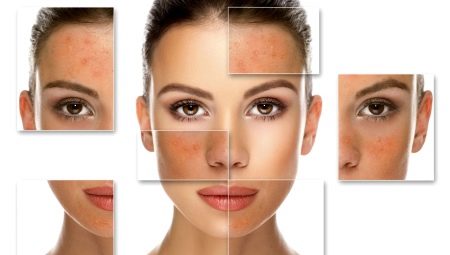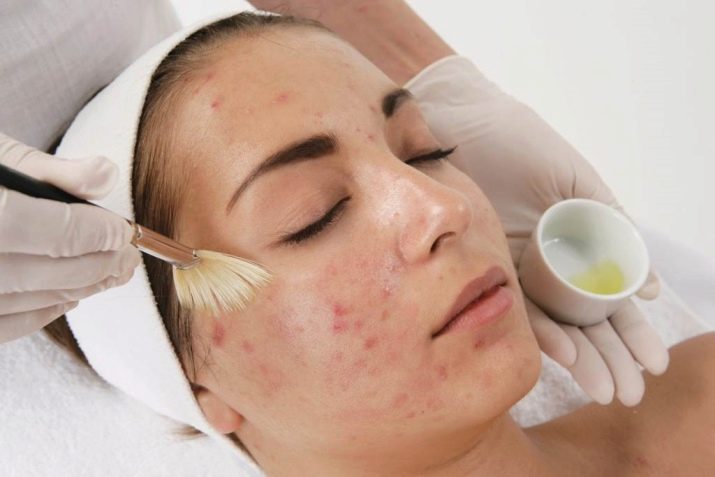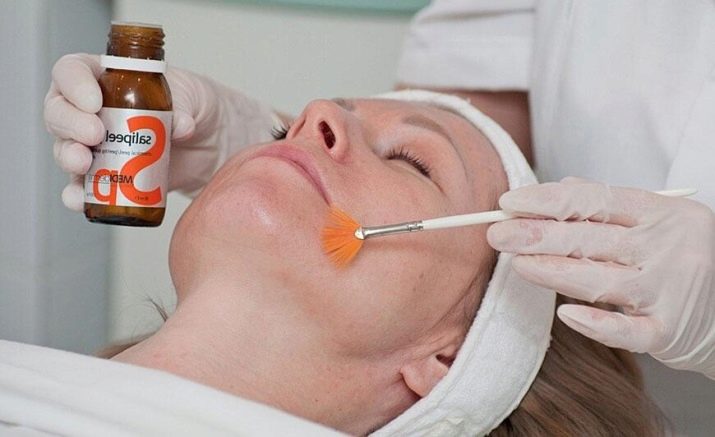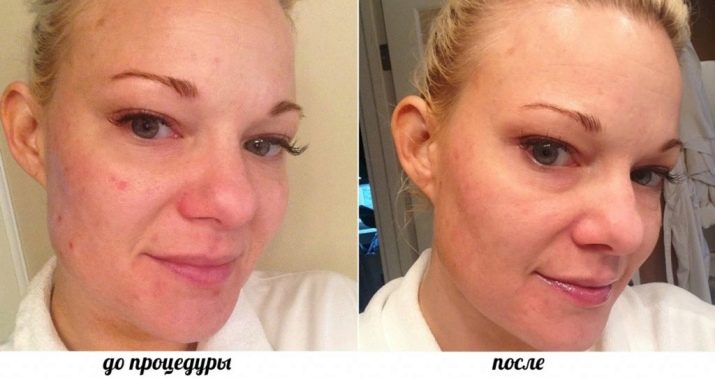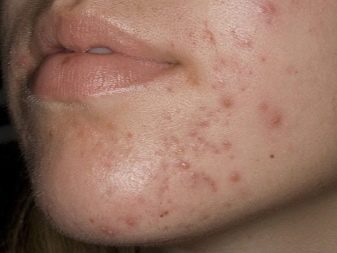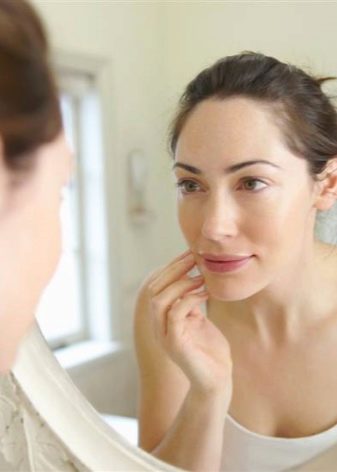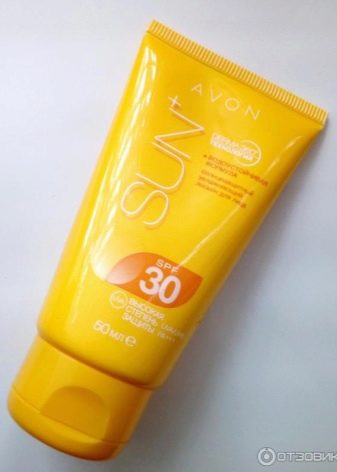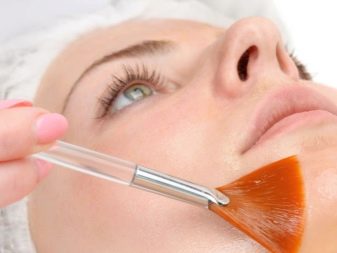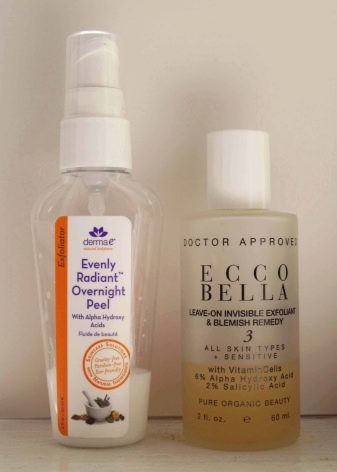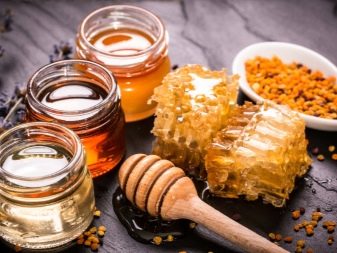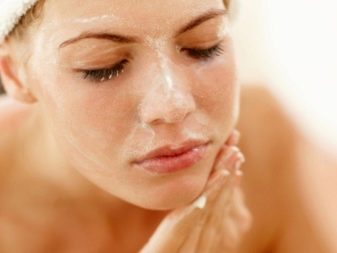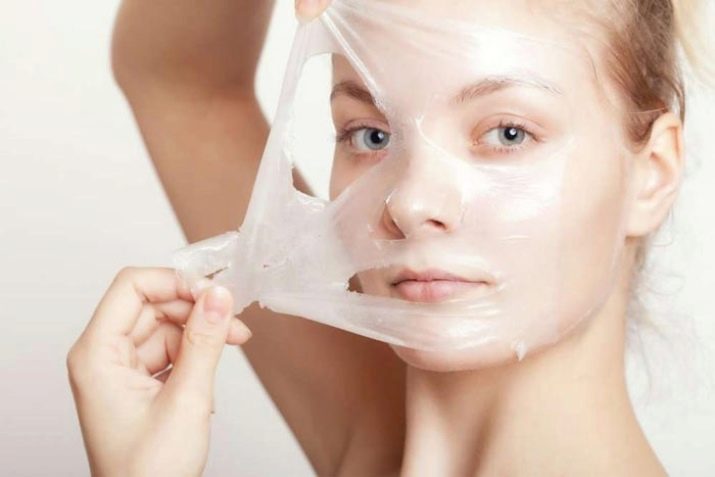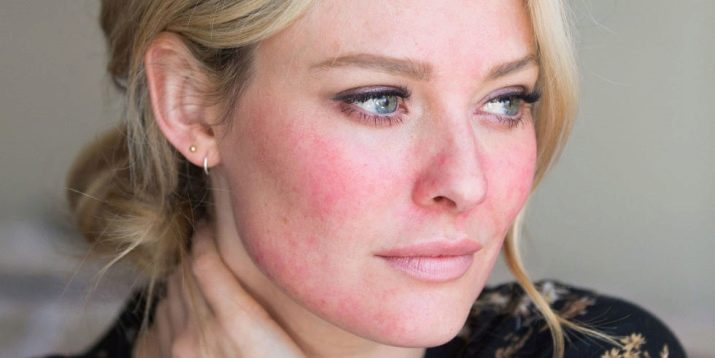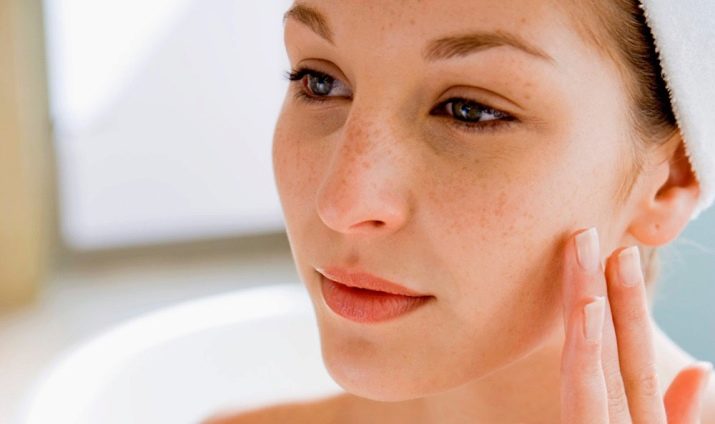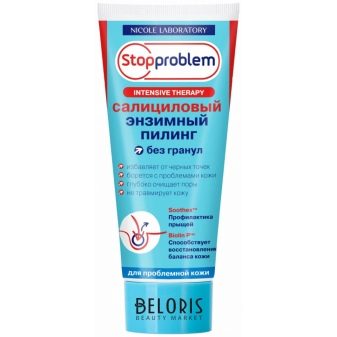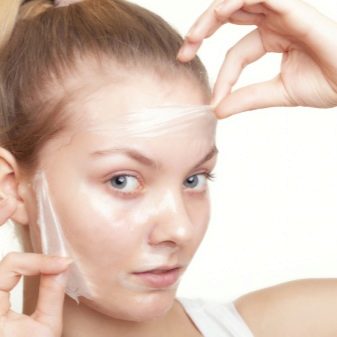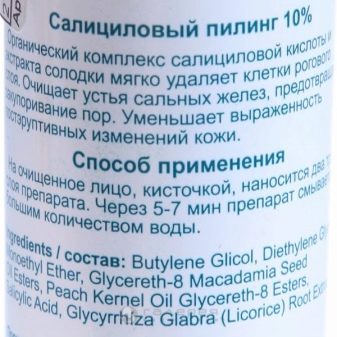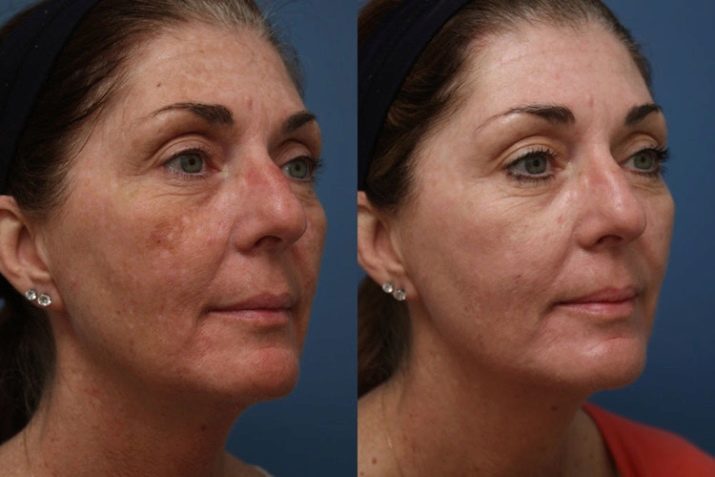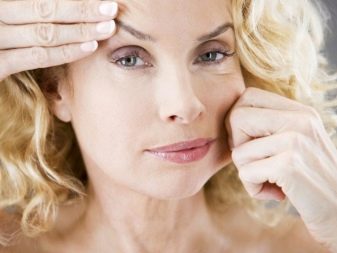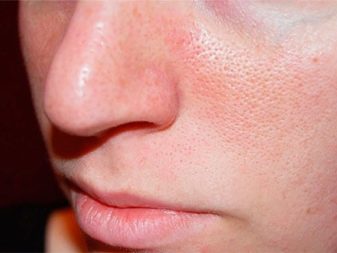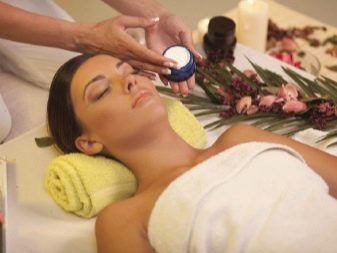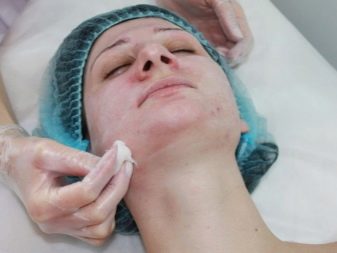Cleansing the skin - the most important stage in the care of the face. If the skin is a problem, acne often appears, this not only spoils the appearance, but also depletes the skin, making it loose, rough, flabby. In such cases, cleansing is even more important. For example, in such a situation, salicylic peeling is perfect.
What it is?
The use of salicylic acid in cosmetology has been successful for several decades, and despite the simplicity and cheapness of materials, it is still considered one of the most effective procedures for combating problem skin.
Salicylic peeling refers to the chemical cleansing of the skin from keratinized particles. For the procedure used salicylic acid (BHA-acid) concentration from 15 to 30%, depending on the situation and the complexity of the case. With the help of acid, dead skin flakes, glued together with sebum (skin fat), dissolve perfectly, without exerting any mechanical effect on the skin, such as, for example, when using scrubs.
Salicylic acid has a complex effect on the skin:
- exfoliates dead skin particles;
- "Includes" the update process, tones;
- helps reduce sebum production;
- prevents the development of inflammation, has an antiseptic effect;
- fights black dots;
- It has an anti-aging effect due to the launch of tissue regeneration processes;
- dries the inflamed skin;
- brightens the skin.
The acid is able to penetrate into the very middle layers of the epidermis, while stimulating the skin’s own production of collagen, which is responsible for the elasticity of the skin.
Indications
The main reasons for which It is worth using the salicylic peeling procedure:
- problem skin with enlarged pores, excessive fat, acne, prone to acne;
- post-acne, scars, increased pigmentation;
- age-related skin changes, fading and flabbiness;
- seborrheic keratosis;
- the presence of skin on the body with increased coarseness (often on the elbows and knees);
- black dots;
- hyperkeratosis (violation of the process of natural skin renewal);
- inflammation of hair follicles.
Contraindications
Before the procedure need to familiarize yourself with the contraindications:
- herpes or fungal diseases in the active phase;
- the period of pregnancy or breastfeeding;
- open wounds, scratches, inflammations, burns in the area of the procedure;
- couperose;
- age up to 14 years;
- allergic reaction to salicylic acid;
- various types of dermatitis;
- the use of drugs that reduce blood sugar levels;
- You should not do salicylic peeling in the summer, because after the procedure the skin is injured, and the active sun rays can prolong the recovery period after peeling or even provoke pigmentation.
Training
The very procedure of salicylic peeling is very simple, but Preparation for it is very important, as it may affect the conduct of the procedure itself and the duration of skin recovery after.
- Preparations should preferably begin 14 days before the procedure.
- It is not recommended to steam out the skin, including in the bath, hot bath, sauna.
- The skin should be protected from exposure to ultraviolet radiation, for this it is worth using special sunscreen with high SPF on the street and refuse to visit the solarium.
- Cancel all exfoliating treatments, including home peels and scrubs.
- If desired, you can use the skin care lines before peeling. Some cosmetic companies produce this kind of products, they can advise you to a beautician.
Holding
The procedure of salicylic peeling is carried out in several stages, regardless of whether you conduct it in the salon with a qualified specialist or at home.
Salicylic peeling procedure in salons is most often carried out using products with a high concentration of acid - usually 25-30%. This procedure refers to the surface-median peeling. Funds with such a high content of salicylic acid in any case can not be used at home.
Salon procedure consists of several stages.
- Cleansing the skin. The face should be thoroughly cleaned of cosmetics and dirt.
- Training. A special agent is applied to the skin to increase the effectiveness of salicylic acid, it softens the upper layers of the epidermis and evens the acid-base balance. The composition is washed off with water.
- Degreasing. Skin is degreased with lotion. In addition to removing excess fat, this tool disinfects the skin.
- Application of acid. Next, the active agent is applied directly, it can be in a liquid or pasty form. Acidic remedy is applied to the face in a certain order, which depends on the thickness of the skin, its sensitivity and the presence of problem areas. As a rule, the first stage is applied on the forehead and chin, then on the temples, after the cheek and nose, the final stage is the eyelids. After the top coat dries, several more are applied depending on your particular case. The last layer is kept for a couple of minutes and washed off. Depending on the composition of the means used, the composition is washed off the face with either water or a special neutralizer. During the procedure, light tingling and tingling as a reaction to the active ingredients is the norm. If there is an intolerable burning sensation, then it is necessary to immediately wash off the composition.
- Completion. After the procedure, soothing agents are applied to the skin, contributing to the speedy regeneration. It can be gels, masks and creams based on aloe.
If you decide on the procedure of salicylic peeling at home, first of all you need to understand how to choose the right tool. For home peeling, you will need a tool containing less than 20% acid in its composition; such preparations belong to the peeling of surface action. Products with acid concentrations above are already deeper and are not recommended for home care.
In addition to determining the concentration of acid, it is worth paying attention to the consistency of the chosen agent, a liquid is usually chosen for the face, and a paste-like mixture is used for problem areas on the body.
If finances do not allow you to purchase specialized tools, you can prepare a tool for home peeling yourself.
For the preparation will need aspirin, honey and fermented milk product (for example, kefir). A couple of aspirin tablets (for dry skin should be used 1 tablet) is taken on a tablespoon of honey and kefir.
Another simple and common recipe is to mix acetylsalicylic acid (aspirin) with a fat cream, for 1 teaspoon cream 1-2 tablets, depending on the oily skin.
In addition to acetylsalicylic acid, you can use pharmaceutical salicylic alcohol, it is sold in bottles and has an acid concentration of 1-2%. On the basis of this tool, the following peeling is done: a teaspoon of honey and half a teaspoon of baking soda are mixed, pour half of a bottle of 2% salicylic alcohol (usually in a 40 ml bottle) and mix them.
Honey appears in almost all recipes, as it acts as an excellent thickener and, in addition, has softening properties and starts the process of skin regeneration.
It is necessary to properly carry out the procedure during the procedure at home
- Facial cleansing from cosmetics.
- Steaming the skin, is well suited imposing hot towels.
- Applying a peeling agent is convenient to produce with a brush, for example, makeup.
- The exposure time varies depending on the selected recipe. Usually the mixture is left on the face for up to 10 minutes, and if you choose a recipe with a fat cream, which is the most gentle, the exposure time can be increased to half an hour.
- If you experience any unpleasant sensations, you need to neutralize the acid as quickly as possible. For this, baking soda dissolved in water is used.
- After the required time has passed, we wash the composition off the face with warm water, you can also use a soda solution to neutralize the acid residues. If you use a recipe based on salicylic alcohol - the use of soda solution is impractical because the mixture already has baking soda.
- It is very important to apply a moisturizer after applying the peeling. Choose a cream suitable for your skin type. It is also good to use products that soothe the skin and trigger its renewal, for example, with aloe in the composition.
Peeling procedures both in the salon and at home are conducted by regular courses with subsequent breaks. When referring to a beautician, he will be able to orient you, depending on your skin type and existing problems, with what frequency and with what composition it is better to perform salon peeling. At home, however, peeling is carried out with a frequency of 1 time in 10-14 days courses of 5-7 times. Between courses take a break at least 2 months.
It is worth remembering that the use of chemical peeling is always a small burn of the surface tissues of the skin, so it is best to contact a specialist who can choose the right remedy, neutralize it in time in a critical situation and minimize the recovery time after the procedure.
Care
After the procedure, a chemical burn is formed on the skin, depending on the concentration of the acid, more or less pronounced.
You can observe the following symptoms:
- temporary tissue redness;
- tightness and dryness of the skin;
- peeling.
Therefore, general recommendations for post-peeling care are:
- the first day should not wash with running water;
- regularly apply moisturizing and soothing agents to the skin;
- protect the skin from exposure to ultraviolet rays when going outside, as unwanted pigmentation may occur;
- gradually, the skin will peel off and peel off, in no case can you tear off pieces of skin, it is better to use a burn-burning ointment on the basis of dexpanthenol during this period;
- at the time of peeling to refuse to visit the bath, sauna, hot bath and swimming pool;
- use nutritional and vitamin masks.
After all the scales come off, the skin is noticeably transformed, it becomes more elastic, even, wrinkles are smoothed.
Means for post-peeling care during a salon procedure will be advised by a beautician.
Facilities
Stopproblem - means for a home peeling on the basis of salicylic acid, enzymes, emollients and soothing components. It is quite a budget tool, it can successfully replace the salon peeling, has a large number of positive feedback from users. There are several recommendations of consumers regarding this tool, for example, it is better to wash it off with the help of special devices, a cosmetic sponge or to remove a part of the product from the face with a napkin before washing it. It is recommended to use once a week for oily skin and 2 times a month for dry. The tool effectively fights acne and black spots, well peels off the keratinous layer of the skin, suitable for sensitive skin.
But at the same time, Peeling StopProblem has a number of drawbacks - ineffective against age-related skin problems, deep scars, scars and traces of acne are also beyond its power.It is therefore suitable for the prevention of oily skin with acne at a young age.
Likoberon - a company that produces 2 excellent budget funds for home peeling with different salicylic acid concentrations.
- LikOberon with 10 percent salicylic acid and licorice root extract is indicated for oily and porous skin, acne, pigmentation, and keratosis. It is a soft peeling, there is almost no discomfort during the procedure. Apply for up to 10 minutes and rinse with water.
- Means LikOberon with salicylic acid 20%, phytocomplex and D-salicin. It is a tool aimed at more serious problems than the previous one. Solves problems such as hyperkeratosis, milia, folliculitis, large scars. At the same time, it has a number of contraindications, such as pregnancy and breastfeeding, exacerbation of herpetic diseases, skin inflammation. Apply for a period of not more than 10 minutes, may cause slight discomfort during use. The use of this peeling is recommended not more than 1 time in 2 weeks, since its acid content is still 1.5 times lower than that of salon peeling (in salons, as a rule, 30% of concentration is used), and such procedures are carried out Cosmetologist with a frequency of 1 time per month.
Peeling "Propeller". Another budget means of Russian production, its price does not exceed 200 rubles. It is made in the form of a peeling-roll, that is, after applying to the skin, the agent is left for the required time up to 10 minutes, after which it is not just washed off with water, like previous types of peelings, but rolled onto the face, resulting in microcellulose and cornified pellets. skin cells. This tool is well suited for oily, but not sensitive skin, as it has the ability to dry strongly.
At the same time it cleans and evens skin tone.
Recommendations
After the salicylic peeling procedure, some complications may arise:
- allergic reaction to the components of the peeling agent;
- itching and redness that does not go away for more than 2 days;
- swelling and inflammation of the skin where the procedure was performed;
- acute herpetic diseases;
- strong skin tightness.
In any of the above cases, it is better to contact a cosmetologist for a solution.and if the case is very difficult, contacting a medical institution will be the best way out.
According to the reviews of women who have ever undergone the procedure of salicylic peeling, one can distinguish the positive and negative aspects that they have encountered.
Pros:
- the complexion improves, the tone evens out;
- excessive oily skin disappears;
- the problem of clogged pores is solved;
- the skin after application of the peeling is soft, elastic and tender;
- lightening pigment spots.
Minuses:
- recovery after the procedure takes time, during which the face flakes off, so you have to adjust the time for the procedures so that it falls on vacation;
- at home, self-made mixtures often cause burns;
- the need to regularly use SPF protection products.
At the moment, there are still many varieties of peels, which one to choose is better able to advise a competent cosmetologist.
Analogues of salicylic peeling may be:
- Azelaine peeling, which stands out for its ability to cope with a problem such as rosacea;
- fruit acid peeling (AHA), which is great for skin that has lost its elasticity and is burdened with age spots;
- Retinoic peeling - stimulates the production of new skin cells;
- phenol peeling - affects the deepest layers of the skin, creates a global burn, after which a long-term recovery takes place, is performed with anesthesia.
You will learn more about salicylic peeling in the following video.
